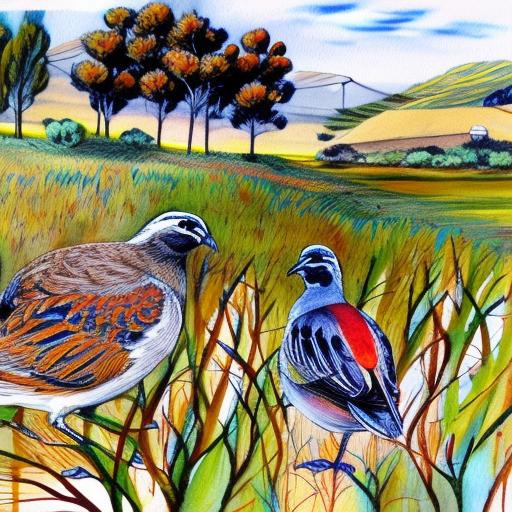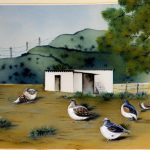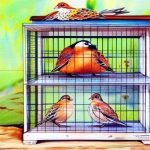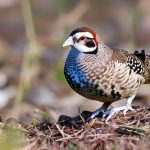Quail breeding pens are essential for anyone looking to raise quail for meat or eggs. These pens provide a controlled environment for quail to breed and lay eggs, ensuring the safety and health of the birds and their offspring. By using breeding pens, quail breeders can monitor the breeding process, protect the eggs from predators, and provide a comfortable space for the birds to thrive. Additionally, breeding pens allow for easy collection of eggs and management of breeding stock, making it easier to track the health and productivity of the quail. Without proper breeding pens, quail breeding can be chaotic and unmanageable, leading to lower productivity and increased risk of disease and predation. Therefore, investing in well-designed and effective quail breeding pens is crucial for successful quail breeding operations.
Quail breeding pens also play a crucial role in maintaining genetic diversity and improving the overall quality of the quail stock. By carefully selecting breeding pairs and monitoring their offspring, breeders can ensure that only the healthiest and most productive birds are used for future breeding. This selective breeding process helps to eliminate undesirable traits and improve the overall genetics of the quail flock, leading to stronger, more resilient birds with higher egg production and better meat quality. Without proper breeding pens, it would be nearly impossible to control the breeding process and maintain the desired genetic traits in the quail flock. Therefore, quail breeding pens are not only important for the immediate care and management of the birds but also for the long-term success and sustainability of the quail breeding operation.
Key Takeaways
- Quail breeding pens are important for maintaining a controlled environment for breeding and raising quail.
- Effective design of quail breeding pens is crucial for maximizing space and ensuring the safety and comfort of the quail.
- Selecting the right breeding stock is essential for maintaining healthy and productive quail populations.
- Maintaining a healthy environment in quail breeding pens involves regular cleaning, proper ventilation, and disease prevention measures.
- Proper feeding and watering practices are essential for the health and productivity of quail in breeding pens.
- Regular monitoring and management of quail breeding pens is necessary to ensure optimal conditions for breeding and raising quail.
- Understanding and addressing common issues such as overcrowding, aggression, and disease is important for successful quail breeding.
Designing an Effective Quail Breeding Pen
When designing a quail breeding pen, there are several key factors to consider in order to create an effective and efficient space for breeding quail. First and foremost, the size of the pen is crucial. Quail require enough space to move around comfortably, especially during the breeding season when they may become more territorial. A good rule of thumb is to provide at least 1 square foot of space per bird in the pen. Additionally, the pen should be tall enough to allow for natural behaviors such as flying and perching. Providing adequate space and height in the pen will help reduce stress and aggression among the birds, leading to healthier and more productive breeding pairs.
Another important aspect of designing a quail breeding pen is the layout and structure of the pen. The pen should be divided into separate areas for nesting, feeding, and resting to mimic the natural behaviors of quail in the wild. Nesting boxes should be provided to give the hens a safe and comfortable space to lay their eggs, while feeding and watering stations should be easily accessible to all birds in the pen. Additionally, the pen should be constructed with durable materials that are easy to clean and maintain, such as wire mesh for walls and a solid base to prevent predators from digging into the pen. Overall, a well-designed quail breeding pen should prioritize the comfort and natural behaviors of the birds while also being practical and easy to manage for the breeder.
Selecting the Right Quail Breeding Stock
Selecting the right quail breeding stock is essential for maintaining a healthy and productive quail flock. When choosing breeding stock, it’s important to look for birds that exhibit desirable traits such as good health, strong egg production, and calm temperament. Additionally, breeders should prioritize genetic diversity by selecting birds from different bloodlines to prevent inbreeding and maintain a strong gene pool within the flock. By carefully selecting breeding stock, breeders can ensure that their quail offspring will inherit desirable traits and be better equipped to thrive in their environment.
In addition to physical traits, it’s also important to consider the age of the breeding stock. Younger birds are generally more fertile and have a longer breeding lifespan, making them ideal for establishing a new breeding program or revitalizing an existing flock. However, older birds with proven track records of successful breeding can also be valuable additions to the breeding stock. Ultimately, selecting the right quail breeding stock requires a balance of physical traits, genetic diversity, and reproductive potential in order to establish a strong and healthy quail flock for future generations.
Maintaining a Healthy Environment in Quail Breeding Pens
Maintaining a healthy environment in quail breeding pens is crucial for ensuring the well-being and productivity of the birds. One of the most important aspects of maintaining a healthy environment is cleanliness. Regular cleaning of the pen, including removing droppings, replacing bedding, and disinfecting feeding and watering stations, helps prevent the spread of disease and parasites among the birds. Additionally, proper ventilation is essential for maintaining air quality in the pen and preventing respiratory issues in the birds. Adequate airflow can be achieved through well-placed vents or windows in the pen, ensuring that fresh air circulates throughout the space.
Another key factor in maintaining a healthy environment is pest control. Quail breeding pens should be regularly inspected for signs of pests such as mites, lice, or rodents, which can spread disease and stress the birds. Implementing pest control measures such as regular inspections, using natural predators like chickens or ducks to control pests, or using safe pest control products can help keep the quail breeding pens free from harmful infestations. Overall, maintaining a healthy environment in quail breeding pens requires diligence in cleanliness, ventilation, and pest control to ensure that the birds remain healthy and productive.
Feeding and Watering Quail in Breeding Pens
Proper feeding and watering practices are essential for maintaining the health and productivity of quail in breeding pens. Quail require a balanced diet that provides essential nutrients for egg production and overall health. A high-quality commercial quail feed is an excellent option as it is formulated specifically for quail’s nutritional needs. Additionally, supplementing their diet with fresh greens, fruits, and protein sources such as mealworms or crickets can provide additional nutrients and enrichment for the birds. It’s important to provide access to feed at all times to ensure that the quail have constant access to essential nutrients.
In addition to proper nutrition, access to clean water is crucial for quail in breeding pens. Water should be provided in clean containers that are easily accessible to all birds in the pen. Regularly checking water containers for cleanliness and refilling them with fresh water is essential for preventing dehydration and maintaining overall health in the quail flock. Additionally, during hot weather or in dry climates, it’s important to monitor water consumption closely to ensure that the birds are adequately hydrated. Overall, proper feeding and watering practices are essential for maintaining the health and productivity of quail in breeding pens.
Monitoring and Managing Quail Breeding Pens
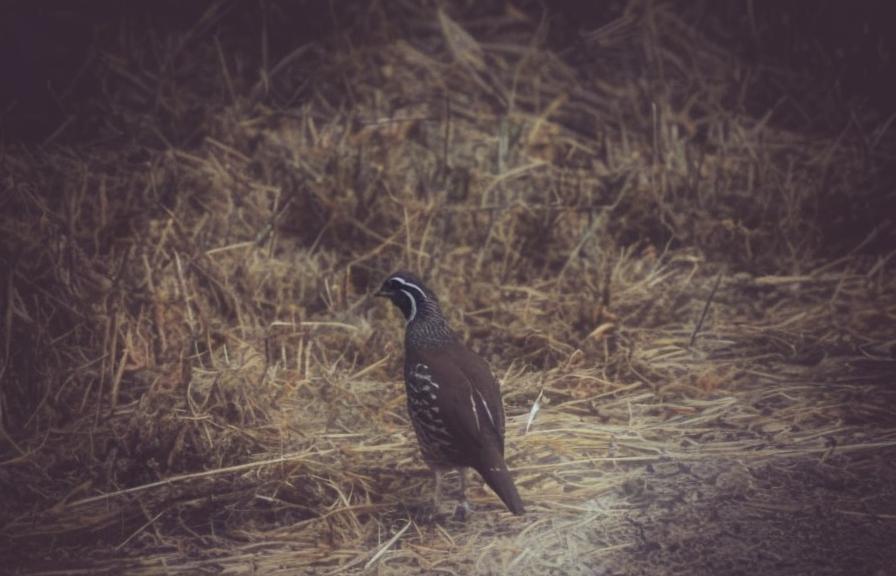
Monitoring and managing quail breeding pens is essential for ensuring the health and productivity of the birds. Regular monitoring of the birds’ behavior, egg production, and overall health can help identify any issues early on and prevent potential problems from escalating. Additionally, keeping detailed records of breeding pairs, hatch rates, and any health issues can provide valuable insights into the overall performance of the quail flock and help inform future breeding decisions.
Managing quail breeding pens also involves making adjustments as needed to optimize the environment for the birds. This may include making changes to nesting boxes, feeding stations, or ventilation systems based on observations of bird behavior or environmental conditions. Additionally, managing breeding pens involves making strategic decisions about which birds to breed together based on their genetic traits and reproductive performance. By actively managing breeding pens and making informed decisions based on careful monitoring, breeders can ensure that their quail flock remains healthy and productive over time.
Troubleshooting Common Issues in Quail Breeding Pens
Despite best efforts, breeders may encounter common issues in quail breeding pens that require troubleshooting to resolve. One common issue is low egg production, which may be caused by factors such as stress, inadequate nutrition, or age-related decline in fertility. By carefully assessing environmental conditions, diet quality, and age of the birds, breeders can identify potential causes of low egg production and make necessary adjustments to improve productivity.
Another common issue in quail breeding pens is aggression among birds, particularly during mating season or when introducing new birds into the pen. Aggression can lead to injuries or stress among the birds, impacting their overall health and productivity. To address aggression issues, breeders can consider separating aggressive birds from the rest of the flock or providing additional space and resources to reduce competition among birds.
Additionally, health issues such as respiratory infections or parasites may arise in quail breeding pens, requiring prompt intervention to prevent further spread among the flock. Regular health checks by a veterinarian or experienced breeder can help identify potential health issues early on and implement appropriate treatment measures.
In conclusion, troubleshooting common issues in quail breeding pens requires careful observation, proactive management, and prompt intervention when issues arise. By addressing common issues effectively, breeders can maintain a healthy and productive quail flock in their breeding pens.
If you’re interested in quail breeding pens, you might also want to learn about the best practices for keeping ducks. Poultry Wizard has a helpful article on what to feed ducks, which can provide valuable insights into the dietary needs of different poultry species. Understanding the nutritional requirements of ducks can be beneficial when designing and managing quail breeding pens, as it allows for a more comprehensive approach to poultry care.
FAQs
What are quail breeding pens?
Quail breeding pens are enclosures specifically designed for the purpose of breeding and raising quail. These pens provide a controlled environment for quail to mate, lay eggs, and raise their young.
What are the benefits of using quail breeding pens?
Quail breeding pens provide a safe and secure environment for quail to breed, which can increase the success rate of breeding and the survival of the offspring. They also help to keep the quail contained and protected from predators.
What should be considered when setting up quail breeding pens?
When setting up quail breeding pens, factors such as size, ventilation, temperature control, and cleanliness should be taken into consideration. It is important to provide enough space for the quail to move around and engage in natural behaviors, as well as to ensure proper airflow and temperature regulation.
What materials are commonly used for quail breeding pens?
Quail breeding pens can be constructed using a variety of materials, including wood, wire mesh, and PVC piping. The choice of materials will depend on factors such as cost, durability, and ease of maintenance.
How many quail can be housed in a breeding pen?
The number of quail that can be housed in a breeding pen will depend on the size of the pen and the breed of quail. It is important to provide enough space for the quail to move around and exhibit natural behaviors, so overcrowding should be avoided.
Are there specific regulations or guidelines for quail breeding pens?
Regulations and guidelines for quail breeding pens may vary depending on location and local laws. It is important to research and adhere to any relevant regulations regarding the breeding and housing of quail.
Meet Walter, the feathered-friend fanatic of Florida! Nestled in the sunshine state, Walter struts through life with his feathered companions, clucking his way to happiness. With a coop that’s fancier than a five-star hotel, he’s the Don Juan of the chicken world. When he’s not teaching his hens to do the cha-cha, you’ll find him in a heated debate with his prized rooster, Sir Clucks-a-Lot. Walter’s poultry passion is no yolk; he’s the sunny-side-up guy you never knew you needed in your flock of friends!

